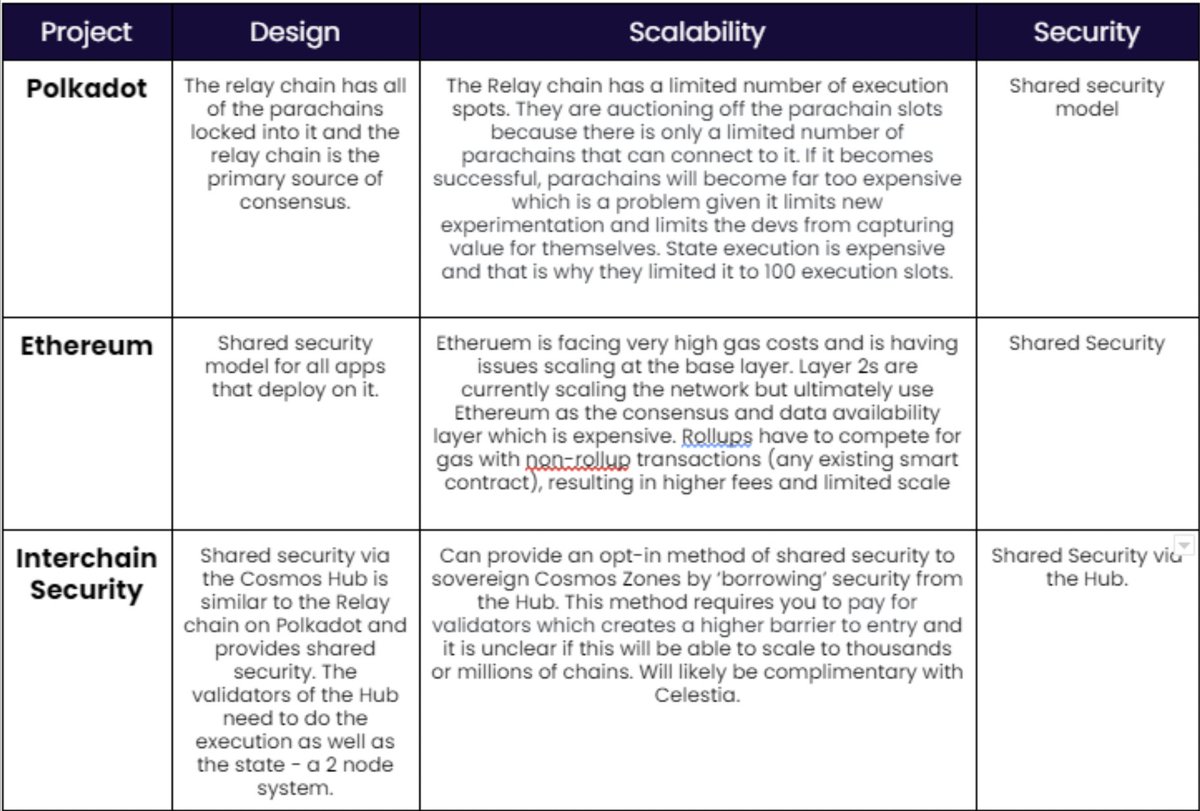
0/ Rollups are a key technology in blockchain scaling, even beyond $ETH. #Cevmos for example enables the deployment of EVM rollups on top of a @EvmosOrg-based rollup leveraging @CelestiaOrg's modular data availability layer
Short 🧵 on the Cevmos stack & its purpose (0/11) ⚛️👇
Short 🧵 on the Cevmos stack & its purpose (0/11) ⚛️👇

@EvmosOrg @CelestiaOrg 1/ #Cevmos (short for Celestia/EVMos/CosmOS) is a modular stack for building EVM-based rollups that use #Celestia as a DA & consensus layer. The Cevmos stack will center around an optimized settlement chain for rollups, based on #Evmos
@EvmosOrg @CelestiaOrg 2/ What is Celestia?
#Celestia is a modular consensus & data availability layer built on the Cosmos SDK that aims to enable anyone to easily deploy decentralized blockchains without the overhead of bootstrapping a new consensus network
More on @CelestiaOrg:
>>> LINK
#Celestia is a modular consensus & data availability layer built on the Cosmos SDK that aims to enable anyone to easily deploy decentralized blockchains without the overhead of bootstrapping a new consensus network
More on @CelestiaOrg:
>>> LINK
@EvmosOrg @CelestiaOrg 3/ What is Evmos?
@EvmosOrg is an application-agnostic chain that offers an EVM-compatible development environment. Built on the Cosmos SDK, Evmos is interoperable with other #Cosmos chains via IBC
@EvmosOrg is an application-agnostic chain that offers an EVM-compatible development environment. Built on the Cosmos SDK, Evmos is interoperable with other #Cosmos chains via IBC
@EvmosOrg @CelestiaOrg 4/ What is Cosmos?
@Cosmos is a modular framework for building sovereign and application-specific blockchains that are interoperable with each other through the IBC module. Both #Celestia and #Evmos are based on the #Cosmos SDK
@Cosmos is a modular framework for building sovereign and application-specific blockchains that are interoperable with each other through the IBC module. Both #Celestia and #Evmos are based on the #Cosmos SDK
@EvmosOrg @CelestiaOrg @cosmos 5/ #Cevmos evolves around an #Evmos-based chain that is implemented as a Celestia rollup by using Optimint instead of Tendermint. This rollup uses @EvmosOrg as the settlement layer and Celestia as the data availability solution
@EvmosOrg @CelestiaOrg @cosmos 6/ Optimint is a drop-in replacement for Tendermint BFT that enables devs to deploy new chains that use a modular & decentralized data availability layer like #Celestia (rollups)
@EvmosOrg @CelestiaOrg @cosmos 7/ The rollup at the center of the #Cevmos stack is called the settlement rollup. #Rollups can then deploy on top of the settlement rollup as a recursive structure (rollup on top of a rollup), with each rollup having a two-way trust-minimized bridge with the settlement layer
@EvmosOrg @CelestiaOrg @cosmos 8/ It should be possible to re-deploy the same rollup contracts and software rollups run on #Ethereum on the #Cevmos settlement layer. Hence, minimal work is necessary to port the rollups
@EvmosOrg @CelestiaOrg @cosmos 9/ This means that the #rollups use calldata on the settlement rollup, while the settlement rollup batches the data using Optimint and posts the data to @CelestiaOrg
@EvmosOrg @CelestiaOrg @cosmos 10/ Since the rollups deployed on the #Cevmos stack ultimately share the DA & consensus layer, they are interoperable with each other through trust-minimized bridges, allowing tokens to be transferred among rollups and between rollup & settlement layer in a trust-minimized way
@EvmosOrg @CelestiaOrg @cosmos 11/ If a rollup within the #Cevmos stack wants to communicate with another non-rollup chain (e.g. via IBC network) or a #rollup that uses a different settlement layer a trusted bridge would be needed, as trust-minimized bridging wouldn’t be possible
• • •
Missing some Tweet in this thread? You can try to
force a refresh







